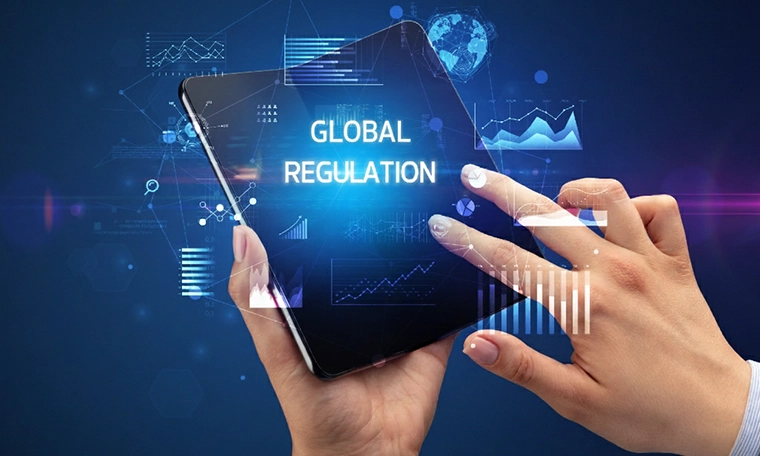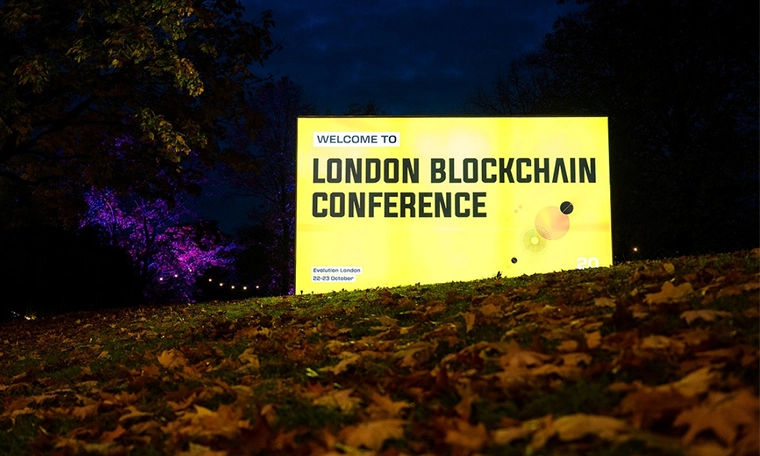Blockchain has come a long way since its cryptocurrency origins. Its influence is gradually sweeping across industries, transforming everything from financial systems to supply chains. But what does the future of blockchain really look like in 2025 and beyond?
Here, we’ve rounded up some of the biggest blockchain trends to have on your radar, complete with statistics and real-life case studies that help forecast future trends in blockchain technology.
The Blockchain Market in 2025: A Snapshot
According to a report by MarketsandMarkets™, the blockchain market globally is on a growth trajectory, forecasted to reach $94.0 billion by 2027, at a CAGR of 66.2%. The numbers speak for themselves here, highlighting the way businesses (and, increasingly, governments) are shifting towards adopting decentralised technology.
This growing popularity of blockchain within the mainstream is also backed by numbers from Deloitte’s 2021 Global Blockchain Survey, which found that nearly 80% of respondents believed digital assets will gain importance within their industries in the near future.
In short, blockchain is moving from its position as a novelty to a strategic asset, used by anyone from financial services to healthcare.
1. Interoperability Between Blockchain Networks
Interoperability is topping the list of blockchain technology trends in 2025. More and more platforms are developing ways for blockchain systems to work together, exchanging data and assets.
Research shows that the size of the Blockchain Interoperability Market is growing exponentially, with a forecasted value of $8.48 billion by 2037 (a 27.1% CAGR for the 2025 – 2037 period, from $456.86 million in 2025). One of the areas which will lead this industry growth is predicted to be DApps – in fact, we’re already seeing a spike of users, with more than 2 million recorded in 2022.
Cross-chain communication has been gaining traction, with developers keen to improve both user accessibility and liquidity across multiple networks. This is also an essential step towards integrating more Web3 applications with blockchain.
2. Blockchain and AI Integration
Two core industry concepts collide to create another blockchain technology trend. The use cases for blockchain and AI integration are numerous and growing in volume by the day. According to recent reports, the global blockchain AI market is set to reach $973.6 million in 2027, with demand for hybrid blockchain and AI-based natural language processing (NLP) solutions for large enterprises as a key driver.
Meanwhile, another paper on the blockchain AI market forecasts found that while large enterprises will indeed be the largest segment globally between 2025 and 2032, SMEs see the fastest growth. The overall predicted growth rate for the period is 25.3% CAGR, with North America and Europe leading the expansion.
From smart contracts which allow for the automation of AI-driven processes, to improved transparency within AI’s data gathering through training models on blockchain-secured datasets, these two powerful technologies are changing the future of digital.
3. Enterprise Adoption at Scale
In a bid to streamline operations, reduce fraud, and improve transparency, the number of enterprises adopting blockchain at scale is also rising dramatically.
Almost 90% businesses which participated in a recent market survey saying they’re utilising blockchain in some form, with a further 87% are planning to invest in blockchain technology.
Of those companies which have already adopted blockchain solutions, 42% are seeing security benefits, while another 42% are utilising it for copy protection. 91% of survey respondents claimed they expect to see tangible ROI from the blockchain tech they’ve adopted within the next five years.
This strategic approach has been taken up by sectors such as:
Supply chain – Using blockchain technology for the real-time tracking of goods in a bid to enforce compliance and trace provenance.
Finance – Decentralised finance (DeFi) organisations are experiencing a boom, with more and more businesses turning towards blockchain solutions like digital asset custody and tokenised securities.
Healthcare – Blockchain allows for better consent-led data sharing and enables clinicians to secure patient records more efficiently.
STAT: IBM’s Food Trust blockchain pilot with Walmart saw the time it took to trace mango provenance reduced from approximately 7 days to just 2.2 seconds after shifting to the blockchain-based system built on Hyperledger Fabric (IBM Food Trust).
4. Tokenisation of Real-World Assets
Another one of the latest trends in blockchain technology is the conversion of financial or physical assets to digital tokens using a blockchain platform. This trend has expanded from the world of bitcoin to span other industries, enabling the online trading of anything from equities and real estate to art and commodities.
STAT: According to a joint report by Boston Consulting Group (BCG) and ADDX, global asset tokenisation is projected to reach $16.1 trillion by 2030, as investors seek to diversify from crypto into other blockchain use cases.
5. Regulation and Institutional Integration
While previously the future of blockchain has been marked by regulatory uncertainty, we’re now seeing a move towards the creation of clearer compliance paths across various locations globally.
This shift is likely to bolster blockchain adoption among institutions such as insurers, banks, and even asset managers, who are starting to view blockchain as a scalable solution worth investing in.
6. Green Blockchain and Sustainability
Blockchain market trends are also shifting towards consensus models led by an eco-friendly ethos. As sustainability becomes an increasingly big part of the tech innovation debate, big blockchain platforms are exploring ways to reduce their energy consumption. Blockchain technology is also being explored as a way of carbon credit verification to improve transparency.
STAT: Toucan Protocol is a blockchain project designed to tokenise verified carbon offsets on-chain to help avoid double-counting (a common issue within traditional systems), thus creating a more transparent carbon marketplace.
7. Growth of Decentralised Identity (DID)
As future trends in blockchain technology slowly seep across real-word applications, we can also expect a shift towards users gaining greater ownership of their personal data – a change which will enhance both privacy and digital trust.
The introduction of decentralised identity systems will put greater control in the hands of citizens, allowing them to verify their credentials without going through local authorities.
Keeping Up with Blockchain Future Trends
Whether you’re a business leader, investor, policy maker, or developer, these blockchain future trends point towards a global shift in the infrastructure and security of our digital landscape.
In 2025, the future of blockchain technology continues to move from the realm of speculation into reality, shaking up how industries conduct business and how trust is handled online.
As blockchain trends accelerate through 2025 and beyond, investing in learning about and leveraging them now will put you ahead of the competition tomorrow.
Start your deep dive into the latest blockchain developments by attending London Blockchain 2025 – register today.



